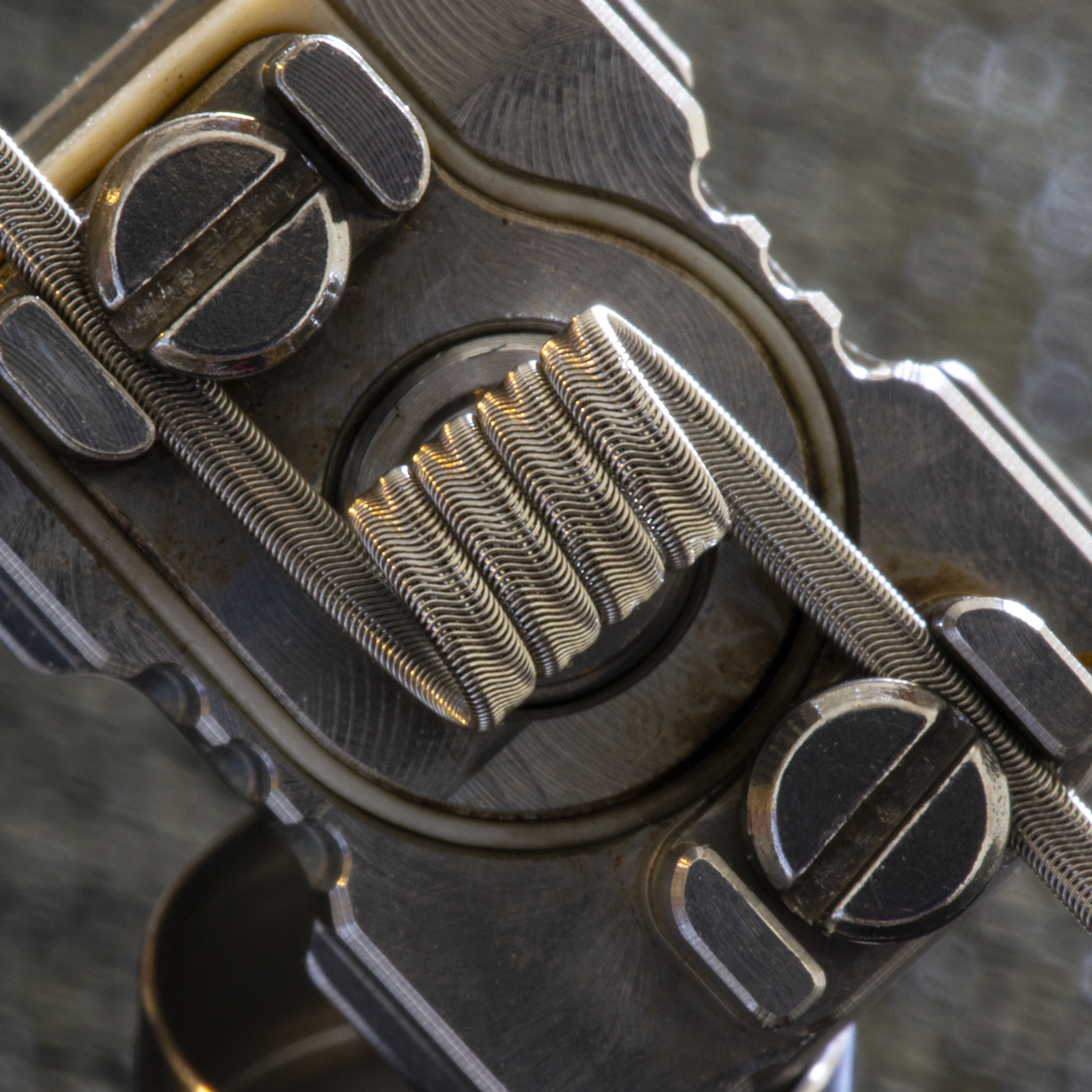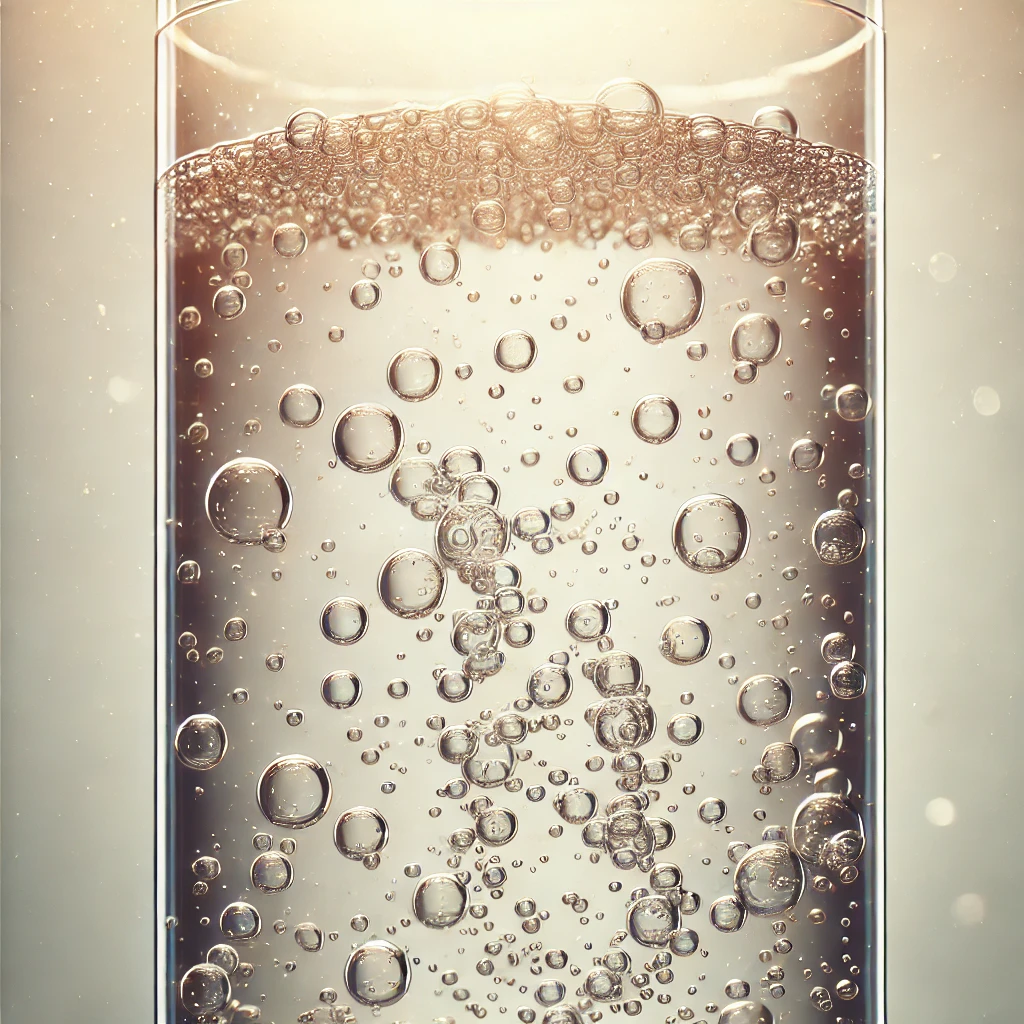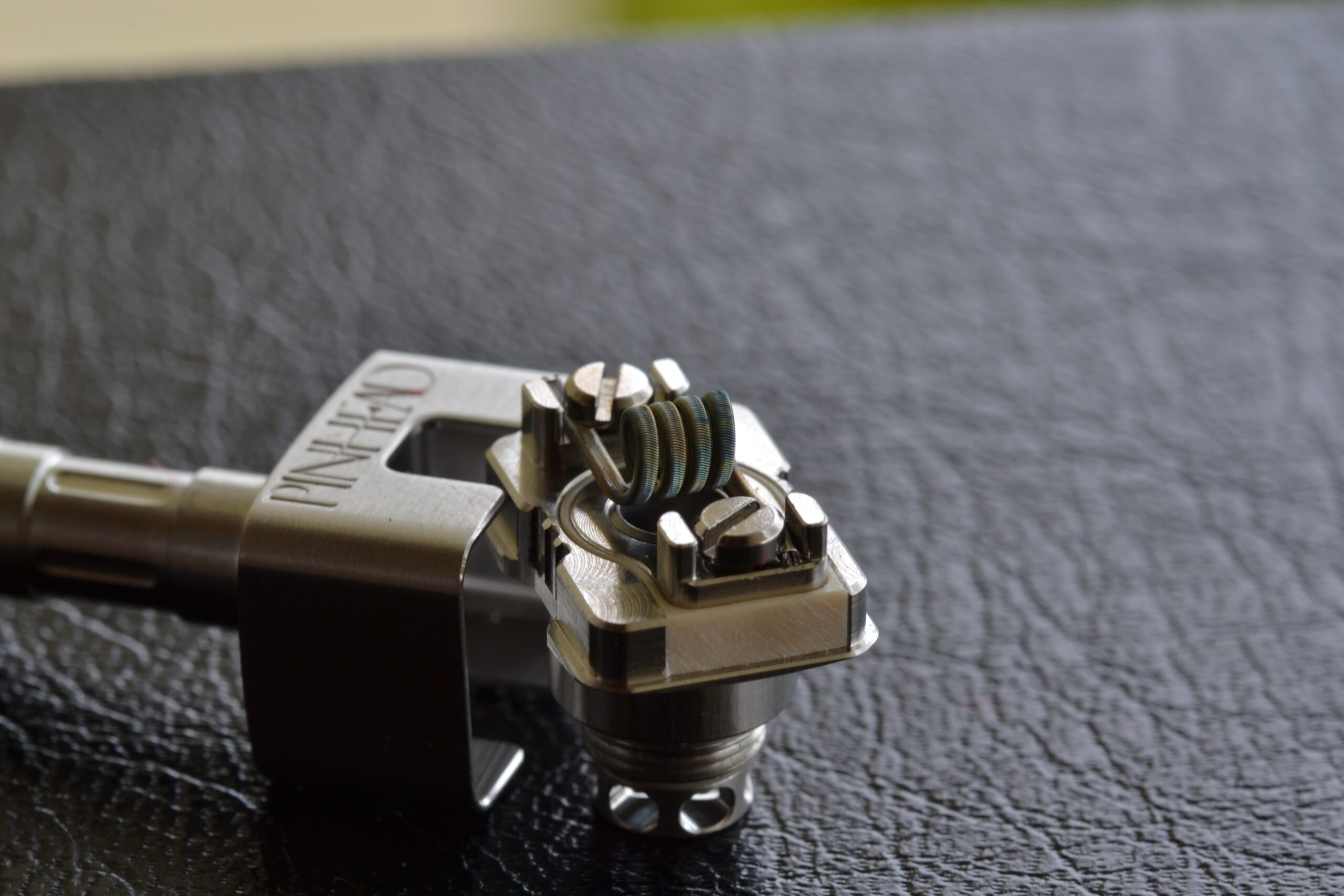INTRODUCTION: IN SEARCH OF TASTE
In this column we will have the pleasure of exploring some aspects that determine the aromatic performance of coils, whether they are single-wire or complex, while analyzing the technical, chemical, and physical aspects and minimizing those related to suggestions and impressions. We will therefore rely on everything that is parametric, truly measurable, and verifiable.
Trying to identify what makes a coil—whether it’s for a sub-ohm device or rebuildable—more high-performing, we can identify three virtues:
- Vapor production: That is, how much vapor a coil produces.
- Aromatic intensity and hit: These are closely linked and directly dependent on vapor production.
- Aromatic definition: That is, the ability to identify and separate all the aromatic notes. We can identify two main Aromatic “characters”, let’s call them “roundness” and “brightness”, depending on how the notes are enhanced or muted.
I don’t believe it is necessary to go into depth about what vapor production or hit means, but it is necessary to delve a bit further into the concept of flavor or aromaticity, and it is worth taking this topic from the root:
The perception of the taste and smell of certain substances is determined by the interaction of specific chemical compounds with our receptors, such as taste buds but especially olfactory cells; in fact, the senses of taste and smell are closely related.
We can immediately notice an important detail: on one hand, we have a parametric science that deals with the construction of aromas, but on the other hand there is a variable and extremely personal biological system: the phrase “to each his own” is not just a saying related to personal preferences, but biologically everyone develops a certain sensitivity to different notes, and this sensitivity is not general but specific to each particular compound.
We have seen “what” perceives tastes and odors, but not “who” is the source of them, or rather we have generically said “molecules.”
The molecules responsible for smells and flavors come in various types: aromatic compounds proper (e.g., vanillin), terpenes (such as pinene and limonene), phenols and alcohols (typically linked to floral aromas), aldehydes (cinnamon), ketones, esters, and so on… There is a true science related to the construction and reconstruction of perfumes and aromas, aptly called aromatherapy or perfumery.
In this science, fragrances are referred to in terms of “notes,” referring to the aromatic impression that develops; in particular, one speaks of top, heart, and base notes:
- Top notes are the first that are perceived. Typically they are linked to light and volatile molecules that evaporate quickly. They provide the immediate impact of a fragrance and often contribute to its sense of “freshness,” being the “edges” of our “shape.” Examples are herbal, citrus, and floral notes.
- Once the top notes have evaporated or degraded, the core of the fragrance arrives, that is the heart notes, linked to molecules that are more complex and longer lasting than the top notes. They determine the main character and personality of a fragrance, acting as a bridge between the top and base notes. Typically, these are spicy or fruity notes.
- Finally, there are the base notes, or tail notes, which are the final phase of an aroma. They are usually rich, heavy molecules with low volatility, meaning they evaporate slowly. The base notes provide depth and warmth and anchor the entire composition—typically woody or spicy notes, as well as vanilla.
HEAT, REACTIVITY, AND AROMATIC SEPARATION
Why is all of this important and how does it affect what happens in our atomizers?
In our atomizers, we heat our flavored liquid at a generally controlled temperature: heat influences the expression of the different aromatic notes and the overall outcome of the experience.
Heat increases the evaporation rate of aromatic molecules—that is, it increases vapor production; however, excessive heat or heat reached too rapidly can also cause too-rapid dissipation of some delicate top notes, altering the balance. Similarly, the heart notes also prefer moderate heat to express maximum complexity, while the base notes are more resistant and suitable for higher temperatures.
We have now reached the crux of the matter: we have the tools to understand WHAT to look for in a “perfect” coil—the maximum applicable power, with the utmost respect for all the notes.
It becomes evident that if a coil is too reactive and reaches excessively high temperatures too quickly, it inhibits the expression of the top notes and some heart notes, transforming a complex liquid into an unformed, sweet paste.
Conversely, a coil that stays too cool might not sufficiently express the base notes.
The ideal strategy is therefore a gradual heating, or ramp-up, that reaches a consistent temperature.
We have understood that the ramp-up is crucial to preserving all the notes; we have “equalized” our aromatic Hi-Fi in the best possible way, and now we want… volume!
Increasing vapor production is probably the first parameter sought, a source of great satisfaction. The first thing a new vaper asks is: how can I make more vapor?
To achieve this, one might easily think that it is enough to increase the power, but if we simply increase the power we would only raise the heat—we also need to increase the evaporation surface.
Obtaining a greater surface while maintaining the thermal balance necessary to express all the aromatic notes requires that this surface be large enough to handle the provided power and therefore… it is time to leave the realm of chemistry and delve a bit into the physics of coils!
BASICS OF THERMODYNAMICS: THE JOULE EFFECT AND HEAT FLUX
From the very first day we started vaping, we were taught about Ohm’s law, which is very important for understanding the relationship between current intensity, voltage, and ohms; although crucial, it is really useless on its own in determining the efficiency and effectiveness of a coil. Imagine a one-ohm coil intended to vape at 14 watts—everything seems fine, right?
But if it is made with 20 wraps on a 4mm ID with a 20 AWG wire… it will never work! Why?
Because the mass is too high for the power expressed and required by our system!
We are about to enter the rabbit hole, and if what I have said above seems obvious, you will realize how often this concept is not applied:
To fully understand the problem, we must use another tool: Joule’s law and the Joule effect:
Q = I² × R × t
Where:
- Q represents the heat produced, measured in joules (J).
- I represents the current flowing through the conductor, measured in amperes (A).
- R represents the resistance of the conductor, measured in ohms (Ω).
- t represents the time duration during which the current flows, measured in seconds (s).
This equation represents the calculation of the heat generated (in joules) when an electric current (in amperes) flows through a conductor with a certain resistance (in ohms) for a specific duration (in seconds).
You will notice that mass does not appear in this equation, but it is necessary to understand what happens if, for the same amount of heat—that is, the same number of joules produced—this heat is applied to a higher or lower mass.
Determining this relationship is the heat flux, or the heat flow, which is the formula that relates the heat produced to the surface area over which it is applied. Mathematically, the heat flux is defined by the letter q and measured in watts per square meter:
q = Q / (A ⋅ t)
Where:
- Q is the amount of transferred heat, measured in joules (J).
- A is the surface area through which the heat transfer takes place, measured in square meters.
- t is the time duration during which the heat transfer occurs, measured in seconds (s).
It is generally accepted that a good heat flux is between 150 and 300 mW/mm², but of course, this is subjective and does not take into account the final and even more important factors: the amount of air entering the system to moderate the temperature and the liquid’s role in moderating the temperature.
For now, we are interested in finding the relationship between the coil’s surface area and the applied power: I will spare you the trivial mathematical steps; we combine Joule’s law, Ohm’s law, and heat flux to obtain:
q = P / A
Looking at the formula once again, we notice an interesting point: for the purpose of the amount of heat, ohms (in a regulated system) are not relevant to the system’s thermodynamics! What matters is the surface area and the applied power! Of course, if you enter the world of mechanical mods, the ohm value must be considered to obtain the desired power, but it does not change the crux of the matter—namely, that if a coil in our possession appears not energetic and reactive enough for our tastes, or if it has too much surface area, regardless of its ohm value, it is necessary either to reduce the mass or to apply higher power.
In summary, an ideal coil should be reactive but gradual, reaching the ideal temperature for all the notes of the aromatic bouquet. Now we know that to achieve this, a precise balance between surface area and applied power is necessary.
The formula obtained allows us to understand that to increase vapor production while respecting all the notes, it is necessary to increase the surface area, maintaining a balance with the wattage. We do not actually need a coil with a lower ohm, but one with a greater surface area! Obviously, the two things are linked, and factors such as battery stress and their lifespan come into play, but that is not the topic for today.
THE IMPACT OF COMPLEX COILS ON AROMATIC PERFORMANCE
We have reached the end of our banquet—it’s dessert time.
At a certain point in the evolution of rebuildable devices, once cloud chasing became popular, people tried to achieve ever more surface area. Flat wires were born, and although they increased the surface in terms of width, in absolute terms—let’s say by mass—it was difficult to achieve a balance because the coils were too wide and heated up too quickly.
Thus, parallel coils were developed, which, by exploiting parallel resistance, achieved a better balance between surface area and applied power. People started twisting wires together—first two, then three—and something very interesting was discovered: when twisting the wire, the performance was much better. Why?
Here enters our friend capillarity: twisting the wires together creates channels that distribute the liquid not only on one side of the resistance but also within and along the entire path, constantly moderating the temperature. Experiments continued by the well-known figure blueeyedgoon85, creator of the first true complex coils—clapton, fused clapton, alien, staggered, etc.
What happens in these coils? An internal capillarity is created within the resistance, whose role—its ability to preserve and express the entire aromatic bouquet we discussed earlier—is essentially linked to its capacity to constantly moderate the temperature and to increase the evaporation surface, expanding it from the two initial dimensions of the single central channel of the single-wire resistance to the three dimensions of all the internal microchannels created by complex wrap and core designs.
At this point, another factor completely changes the rules of the game, namely having a wrap, which, while not altering the resistance, does add mass: the balance between surface area and wattage must therefore be recalculated.
What does this mean? It means that depending on the type of wrap and its dimensions, we will obtain different capillarity and surface area.
The balance between the thickness of the wrap and the core is crucial; the thinner it is, the easier it is to obtain high-performing coils that, without the need for excessive power, can reach the ideal temperature.
Even the total number of wraps becomes important—they must be sufficient to balance the speed of heating with the applied power and, if you’re in a mechanical setup, also with the ohm value necessary to achieve the desired wattage.
Before delving into the world of custom coils and concluding this exploration, I would like to briefly analyze why mesh coils work so well on “pod” devices and so poorly on rebuildable atomizers.
The attempt to exploit the capillarity of the mesh clashes with an objectively small surface area, which heats up at an incredible rate, therefore being unsuitable for high power but extraordinarily efficient at reduced power. However, the aromatic intensity, the separation of notes, and the hit are not increased, because to achieve that it is necessary to increase the power while accompanying it with maximum surface area and airflow.
Here, complex coils come into play—a completely different strategy to achieve maximum aromatic efficiency (rather than energetic efficiency).
Let’s briefly analyze, point by point, summarizing in a few words: what is the difference between a clapton, a fused, an alien, and a staggered coil? Mainly, it is the amount of wrap used and the number of internal channels:
- A single clapton provides only external capillarity and little additional mass; only a few extra watts can be applied.
- A fused adds an internal channel that further moderates the temperature: the thicker the wrap, the greater the need for energy to properly activate the coil.
- An alien further increases the external capillarity, by about ⅓ compared to a fused of the same core.
- A staggered makes things even more complex, as the type of wrap provides much more capillarity but also adds more mass; therefore, the staggered approach usually performs best when the applied power becomes substantial, compensating and balancing the mass and fully exploiting the capillarity.
Thanks to what we have seen at the beginning, and having identified what determines the aromatic performance of a coil, it becomes incredibly easy to judge a coil in terms of its complexity. However, there is one last, counterintuitive factor:
It might seem at first that the greater the volume of empty space in which the capillarity is expressed, the better the performance. However, capillarity has a prerogative: it expresses itself best when it travels through more confined spaces, and his expression it’s relate on a surface area parameter, not volume!.
In fact, a 2-core fused coil has a greater “empty” volume than a staggered coil of the same dimensions (composed internally of ribbon), yet its aromatic definition is noticeably flattened out, giving a round and often too sweet output: Why?
As said, the vaporization surface does not coincide with the volume of the internal channels and capillarity distributed over very small spaces is far more efficient and provides a greater evaporation surface.
If capillarity has to work over channels that are too wide, it is not sufficiently rapid in supplying liquid to the coil’s wrap, which will then reach higher temperatures temporarily, resulting in explosive and intermittent evaporation. Typically, this results in the characteristic popping sound—not more, not less—due to the air trapped within the channels in the split seconds when it is not moderated by the liquid; as it heats up, it explodes outside the wrap, creating a depression that draws in more liquid, and so on, with a typical vaporization that greatly emphasizes the base notes but often fails to preserve the top notes, maintaining an overall high surface temperature.
That’s all for today—it has been a long journey, but I hope it has been an interesting exploration into this fantastic world!





